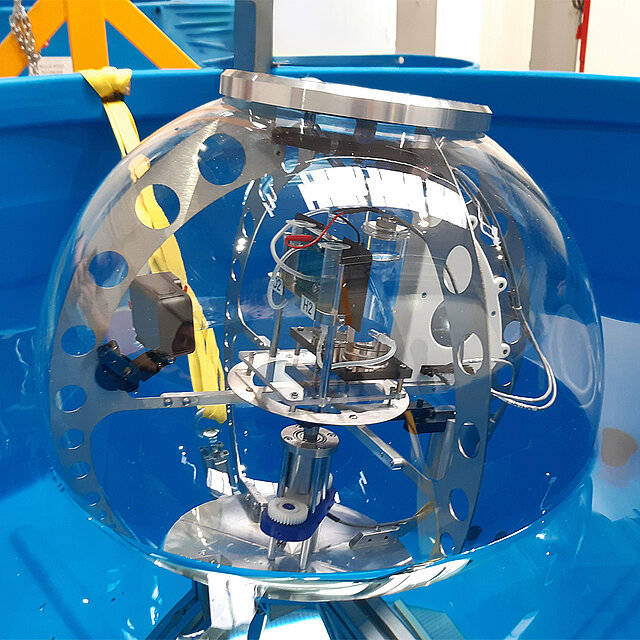Our research
 Materials
Materials
7. Designing the next generation of composite materials
Success Story #1
Decarbonisation of the automotive industry thanks to bamboo super fibres
Due to their exceptional mechanical qualities, the main materials used today to strengthen polymer composites are glass fibre and carbon fibre. However, these fibres are hard to recycle, non-biodegradable and have a large carbon footprint.
Natural fibres such as bamboo, flax or hemp are alternative resources that can be used as strengthening materials. Several studies come to the conclusion that these natural fibres, particularly bamboo, are environmentally superior to synthetic fibres at each stage of the composite material life cycle.
Contact:Carlos Fuentes Rojas

Success Story #2
Optimising thermoplastic composite welding technology
Daher, a company specialising in the aeronautical industry, and LIST have entered into a major partnership aimed at optimising welding technology for the assembly of primary aircraft substructures based on thermoplastic composites. The three-year bilateral agreement focuses on infrared welding technology suitable for large, thick parts and intended to revolutionise the industrial manufacture of high-quality structural parts.
Thermoplastic composites are increasingly used in the aerospace industry because of their lightness, mechanical strength and ability to be welded. Another advantage is that they require less energy than rival composite materials and have the enormous advantage of being recyclable.
The application of this technology will expand the welding solutions for thermoplastic composites offered by Daher and KVE Composites, a Dutch company specialising in the design, manufacture and assembly of high-performance thermoplastic composites. The partnership benefits from Daher's expertise as a designer and manufacturer of aerostructures as well as LIST's expertise in materials science and process development.
Contact: Damien Lenoble
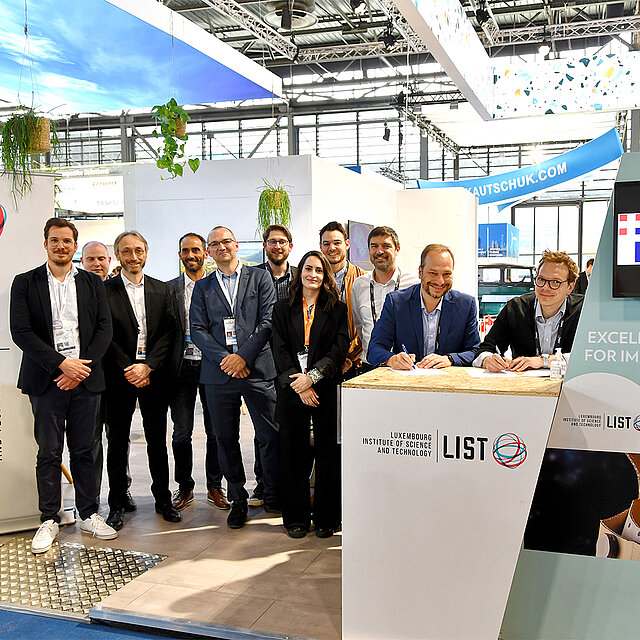
Success Story #3
Advances in monitoring the structural health of ceramics
Within the framework of a European project (M-era.Net CENTAUR), LIST's work has focused on creating ceramic matrix materials reinforced with short or continuous fibres, which are suitable for the 3D printing extrusion process.
The micromechanical models that have been developed aim to accurately predict the effective elastic properties and electrical conductivity of ceramic matrix composites in 3D printing as well as the damage produced in these composites.
LIST researchers have developed a unique mechanical extraction technology to obtain long bamboo fibres without damaging them as well as a process to obtain high-performance cellulose microfibres from bamboo fibres.
Transformed in this way, the bamboo super fibres have excellent tensile strength exceeding the mechanical properties of glass fibre and all other natural fibres. These results offer an alternative way to speed up the sustainable generation of long-fibre-reinforced polymer composites needed for key sectors such as the automotive and aviation industries.
Contact: Ahmed Makradi
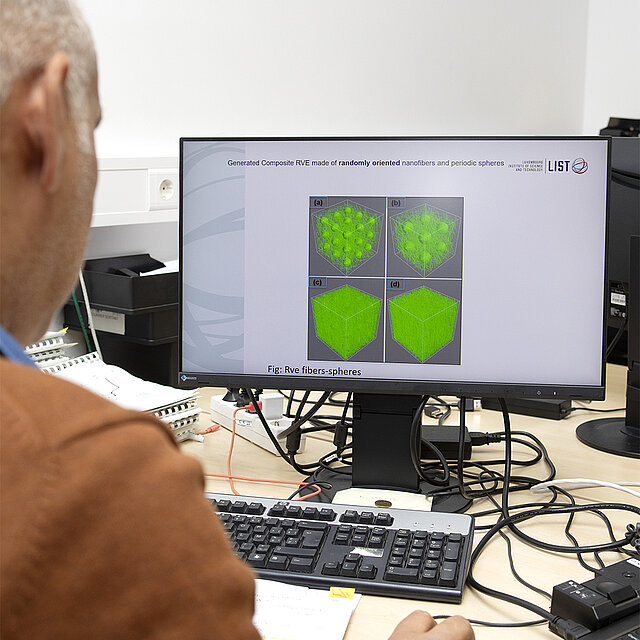
- Success Story #1
- Success Story #2
- Success Story #3
8. Using functional polymers as a force for innovation
Success Story #1
Creating a new family of polymer materials
A new family of polymer electrolytes has been created thanks to the support of an INTER grant from the National Research Fund (FNR) within the framework of the DISAFECAP project (Safe Solid-State Supercapacitors using Dynamic Ion Gels from Poly(ionic Liquids)), in cooperation with two French partner universities (CY Cergy Paris University and Lyon University 1).
This new family of polymer materials called dynamic ion gels is obtained by combining polymers and oppositely charged silica nanoparticles. This process leads to the creation of robust polymers with self-healing properties and high ionic conductivity.
Contact: Pierre Verge
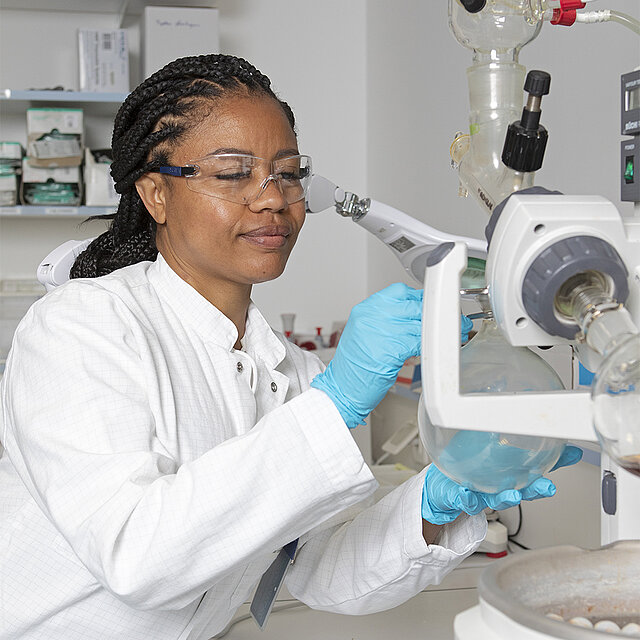
Success Story #2
Nine PhD students to develop a new generation of sustainable polymer composites
Our aim is to develop a new generation of sustainable polymer composites based on recyclable resins and renewable and/or recycled fibres. The envisaged materials should not only be recyclable but also processable and repairable, while retaining the attractive characteristics of existing high-performance composites. With this in mind, we are coordinating a doctoral study research programme co-funded by the National Research Fund's (FNR) PRIDE programme.
The thesis topics range from the computerised and experimental design of new resins to the implementation of recycling processes, as well as the use of organic raw materials and the implementation of design strategies facilitating the repair and reuse of end products. This effort will generate the new fundamental knowledge needed to put these results into practice as well as creating a new generation of researchers in the critical field of sustainable plastic and composite technologies.
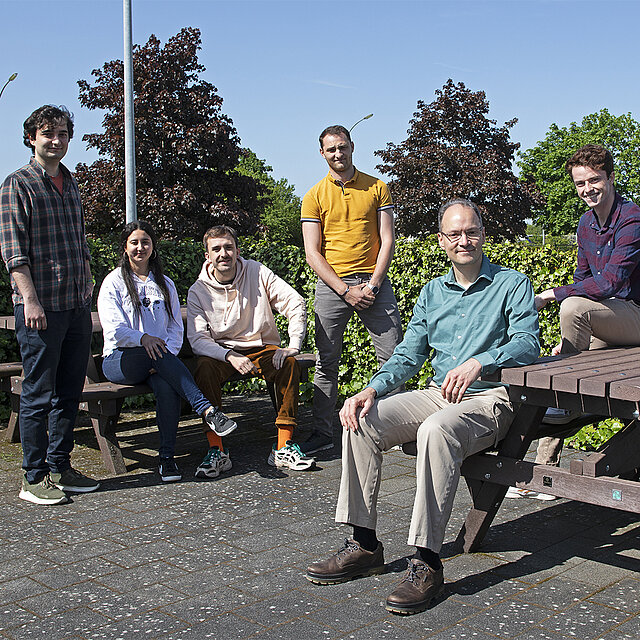
Success Story #3
The move towards safe, convenient and powerful lithium-ion batteries
LIST has developed two families of new high-performance ionic conductive polymer materials (polymer electrolytes). The first family consists of single block copolymers containing chemically related anions and mobile cations. In these materials, the uncharged blocks ensure rigidity up to high temperatures and make the material mechanically strong, while the charged blocks ensure the transport of low-strength ions. The resulting conductive block copolymers provide an attractive combination of mechanical/thermal stability and high ionic conductivity, making them a particularly appealing option for electrical energy storage applications.
Contact:Daniil Nosov & Alexander Shaplov
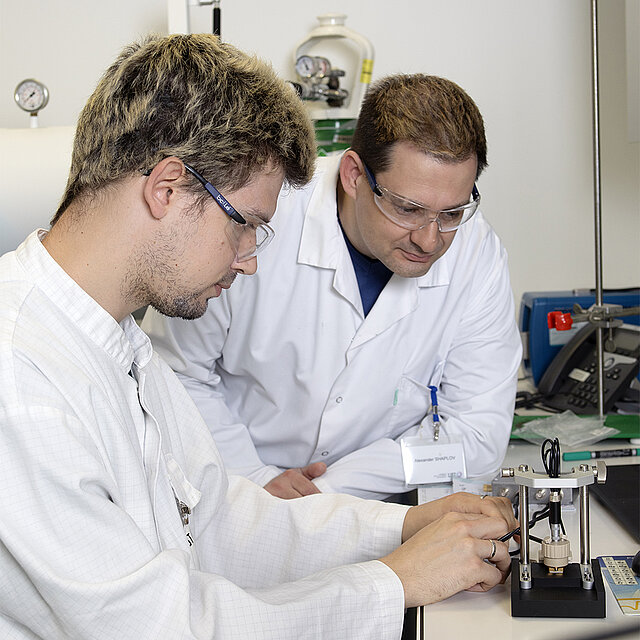
- Success Story #1
- Success Story #2
- Success Story #3
9. Developing new multi-functional nanoparticles
Success Story #1
A nanoparticle paves the way for the next generation of tyres
In collaboration with Goodyear, LIST has revisited the tyre tread skeleton called the silica percolation network. Using a new modified dendritic silica nanoparticle, LIST achieved better results than conventional rubber/silica nanocomposites and paved the way for the next generation of tyres with better traction and lower rolling resistance.
The application of such a charging system for the reinforcement of tyre rubber opens up new prospects for the design of tyres with low rolling resistance and competitive traction together with sustainable performance. This study was published in the Chemical Engineering Journal and the particles are patented.
Contact: Jean-Sébastien Thomann

Success Story #2
Lignin in antibacterial additives
Lignin, which is present in most vascular plants and in a few algae, is of interest to researchers mainly because of concerns about the environment and limited oil resources. It has so far been considered as waste in the production of paper pulp and burned to produce energy. The structure, properties and types of lignin depend on their source and extraction process.
LIST's research has led to a description of how the fundamental understanding of nanoprecipitation of polymer nanoparticles makes it possible to modulate the mechanical, optical and thermal stability of biosourced nanoplastics made from renewable and unused resources, including lignin. These particles are currently being developed to reinforce elastomers, as an antibacterial additive for composites and as anti-ageing capsules in cosmetics. This study has been published in Journal of Colloids and Interfaces Science and the particles are patented.
Contact: Resmi Anand & Lise Innocent
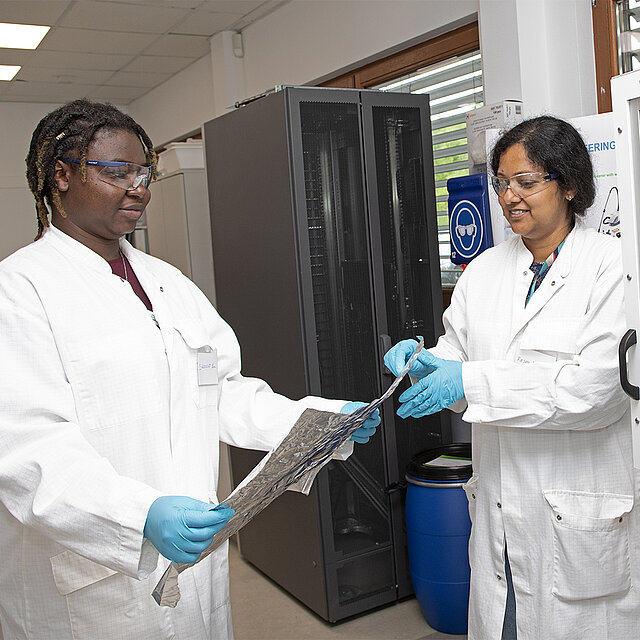
Success Story #3
Developing contrast agent nanoparticles used in ultrasound
While developing "green" chemical processes, one of our studies demonstrated the synthesis and stabilisation of amorphous calcium carbonate nanoparticles thanks to green processes and stabilisers. These particles may be used in medical technology as contrast agents in ultrasound. The study was published in Royal Society of Chemistry Green Chemistry and the particles are patented.
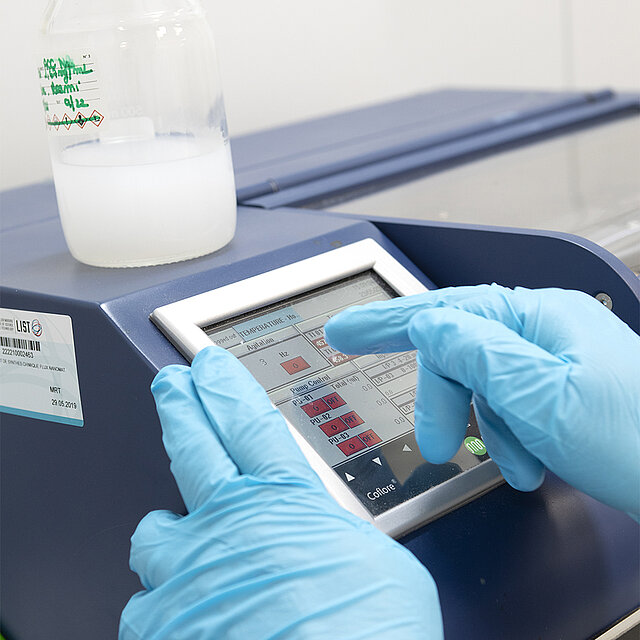
- Success Story #1
- Success Story #2
- Success Story #3
10. Increasing our international influence in the field of nanotechnology
Success Story #1
A step towards Luxembourg's first quantum computer
In 2022, LIST welcomed Florian Kaiser, whose mission is to create a new materials research group for quantum computing. Florian previously held the post of assistant professor at the University of Stuttgart.
Over the next five years, the overall objective is to demonstrate the generation, manipulation and use of the qubits needed to demonstrate the first quantum computing originating from Luxembourg technology. The technology studied has the potential to generate more than ten qubits interlinked by a basic device drawing on the atomically controlled silicon vacancy on ultra-high-purity substrates.
This technology will be developed under the responsibility of Florian Kaiser, one of the world's experts in this technology.
Contact: Florian Kaiser

Success Story #2
Seven PhD students successfully defended their PhD thesis
From the largest doctoral training unit in the FNR PRIDE programme, seven PhD students successfully defended their thesis in 2022. Nikhar Khanna, Rutuja Bhusari, Tairan Francisco da Cunha, Sangitta Dutta, Alvar Torello, Naveen Aruchamy and Youri Nouchokgwe have been awarded the degree of "Doctor of the University of Luxembourg".
These researchers have demonstrated scientific and technological excellence with articles published in the best journals (Nature, Science, Nature Materials, Nature Communications) and three patents filed. After Tai Nguyen in 2021, Alvar Torello from the PRIDE MASSENA programme won the prestigious Laval Prize from the University of Luxembourg, which rewards an exceptional achievement in the field of electrical engineering.
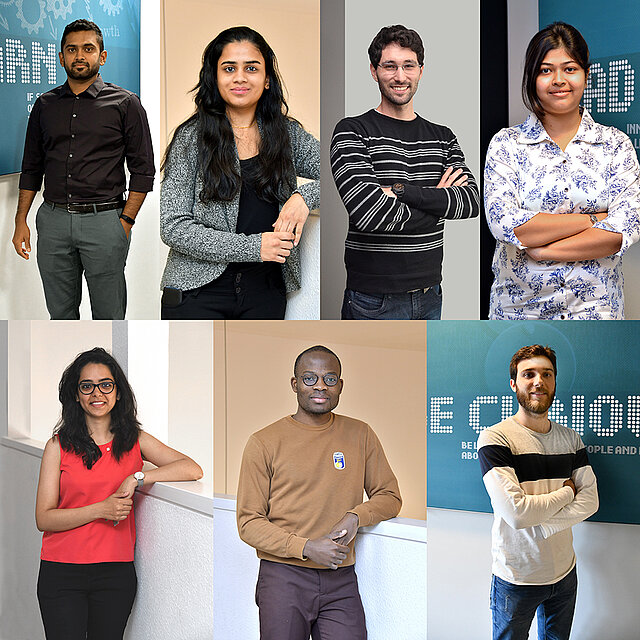
Success Story #3
A LIST physicist elected Fellow of the American Physical Society
Dr Jorge Iñiguez, a scientific expert from LIST's Materials Research and Technology (MRT) department, has been elected to the prestigious rank of Fellow of the American Physical Society (APS). This distinction rewards his "revolutionary contributions to the computational theory of ferroelectric and multiferroic materials".
Contact: Jorge Iñiguez

- Success Story #1
- Success Story #2
- Success Story #3
11. Pushing the boundaries of scientific instrumentation
Success Story #1
Creating unique nano-analytical techniques in batteries
The development of efficient and safe energy storage technologies is essential in order to speed up the transition to sustainable and clean energy. Although lithium-ion batteries are now ubiquitous in everyday life, many nanoscale mechanisms underpinning how these batteries work are not yet fully understood. Knowledge of nanometric mechanisms such as transport and transfer of charges occurring at the internal battery interfaces will be useful in mitigating degradation processes and significantly improving the efficiency, safety and sustainability of these storage devices.
Investigating local electrochemistry on a nanometric scale in batteries during operation is a challenge currently faced by the battery research community. To further develop tools and methods of analysis, including machine learning approaches for battery characterisation, an international research team led by LIST has received funding of EUR 5 million from the European Union and an additional EUR 700,000 from Switzerland.
Contact: Santhana Eswara Moorthy

Success Story #2
Turning industrial dyes into advanced materials
Within the framework of a European Commission Horizon 2020 project via the Marie Skłodowska-Curie Actions work programme, LIST has successfully developed thin functional polymer films from affordable industrial dyes. The synthesis of thin polymer films was carried out directly from the gas phase, allowing their molecular engineering and direct integration for practical applications. In particular, our researchers' discoveries in this project have made it possible to improve the photoactivity of thin films of polymer catalyst.
Contact: Nicolas Boscher

Success Story #3
Exploring new areas in terms of functionality, synthesis and characterisation of materials
LIST aims to create materials platforms integrating synthesis and characterisation, to develop pilot systems, collect engineering data sets, develop machine-learning algorithms and to discover new materials to meet critical challenges.
The resulting data-driven discovery platforms will take advantage of LIST's capabilities to explore new areas in terms of functionality, synthesis and characterisation of materials. Examples of applications include the prediction of material properties, such as thermal conductivity, in order to design better insulators, the analysis of experimental data, for example mass spectrometry for structure elucidation and the optimisation of process parameters, in particular for the chemical/physical deposition process in the vapour or electrochemical phase.
Contact:Matthias Rupp
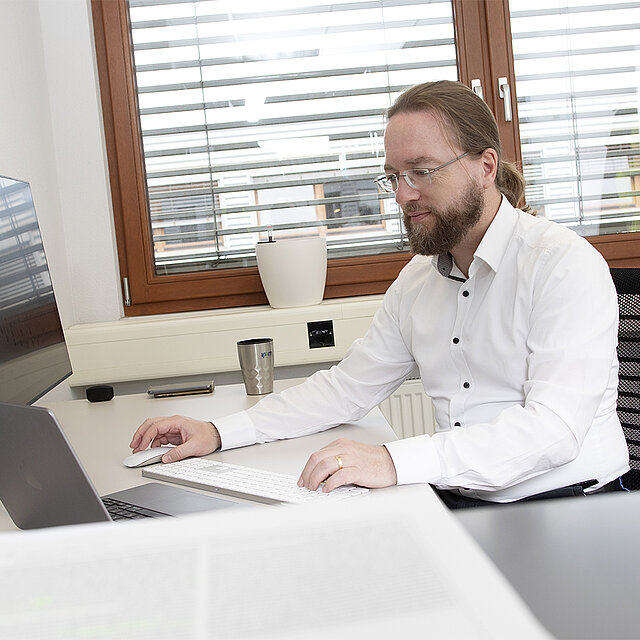
- Success Story #1
- Success Story #2
- Success Story #3
Our Innovations
An innovation centre for composite materials and processes
Success Story
A new innovation centre for zero emission mobility
In December 2022, LIST opened the Sustainable Composite Materials & Manufacturing Innovation Centre (SCMM IC). The initiative focuses its research and innovative development priorities on the challenges faced by the transport sector in the search for zero emission mobility solutions. The aim of the innovation centre is to speed up the use of materials and processes with a low carbon footprint for functional composite parts that will meet the needs of the vehicles of the future.
To this end, innovative technological bricks of materials, for example biosourced and/or recyclable materials as well as efficient manufacturing and recycling processes, will be integrated into highly relevant demonstrators aligned with the vision of major industrial leaders, their equipment manufacturers and major suppliers in the automotive, rail, space and aeronautical sectors, not forgetting the emergence of urban air mobility.
The centre proposes an effective approach allowing for a rapid transition of research results to the real economy by bringing together, in an ambitious innovation programme, end users (OEM), national and international operators along the entire composite value chain and LIST researchers.
The initiative involves four major players in European transport, namely Toyota, Airbus, Thales Alenia Space and Alstom, who share their critical needs to enable the medium-term marketing of ultralight, recyclable and low-carbon vehicles.
This innovation programme will initially last four years with a budget of more than 16 million euros, co-funded by LIST, the Ministry of Research and Higher Education, the Ministry of the Economy and active members from industry. In particular, it will include an investment of 3 million euros from LIST for new industrial technologies to complement the composite platform provided by the Materials Department.
Contact:Damien Lenoble

Looking back on six years of successful partnership with Goodyear
Success Story
Making Luxembourg a centre for disruptive innovation in the field of mobility
Over the past six years, LIST and The Goodyear Tire & Rubber Company have collaborated to achieve pioneering results in the areas of materials research, understanding structure-property relationships and data science.
Delivering outstanding results
Initiated in 2017, the largest Public-Private-Partnership to date in Luxembourg with a budget of about €50 million has led to impressive Science & Technology impacts in the areas of Materials as well as Data Science: 94 scientific publications and contributions to conferences, as well as 17 trade secrets and 14 patents.
These achievements have been implemented in many day-to-day operations at Goodyear, as well as LIST in various areas. For example, Goodyear has deployed
- A break-through capability helping enable a data-driven tire development process
- Wear prediction and leak detection algorithms for tire intelligence solutions
- A large number of unprecedented analytical capabilities
- A new approach in optimising the type and quantity of resins, contributing to a secure raw materials supply.
Our partner is also considering the upscaling of proof-of-concept, bio-based reinforcement fillers (lignin and cellulose) and their use in high-value added products.
Contact:Damien Lenoble
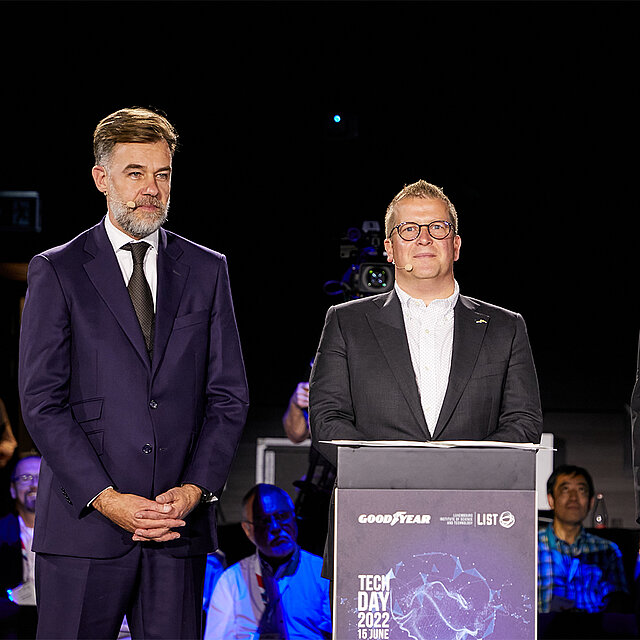
Using green hydrogen to complete the final stages of decarbonisation
Success Story
Producing green hydrogen thanks to wave movement
LIST has developed a proprietary technology providing freedom from the intermittent nature of variable renewable energy, such as solar and wind power, but from ocean’s waves as a source of electricity in the water electrolysis process. This proof of concept has strong economic potential with regard to hydrogen production costs, while minimising the strategic dependence on critical metals and scarce land resources used in variable renewable energy.
This device was exhibited to local industrial stakeholders at the TechDay at the Maison des Arts et des Etudiants in Belval on 15 June 2022. It aims to convince local players of the robustness of the technology in order to move towards the next stage of a full-scale demonstrator in the marine environment. A recent visit by politic players has already enabled us to discuss the potential of this technology "made in LIST".
Contact: Jérôme Polesel
